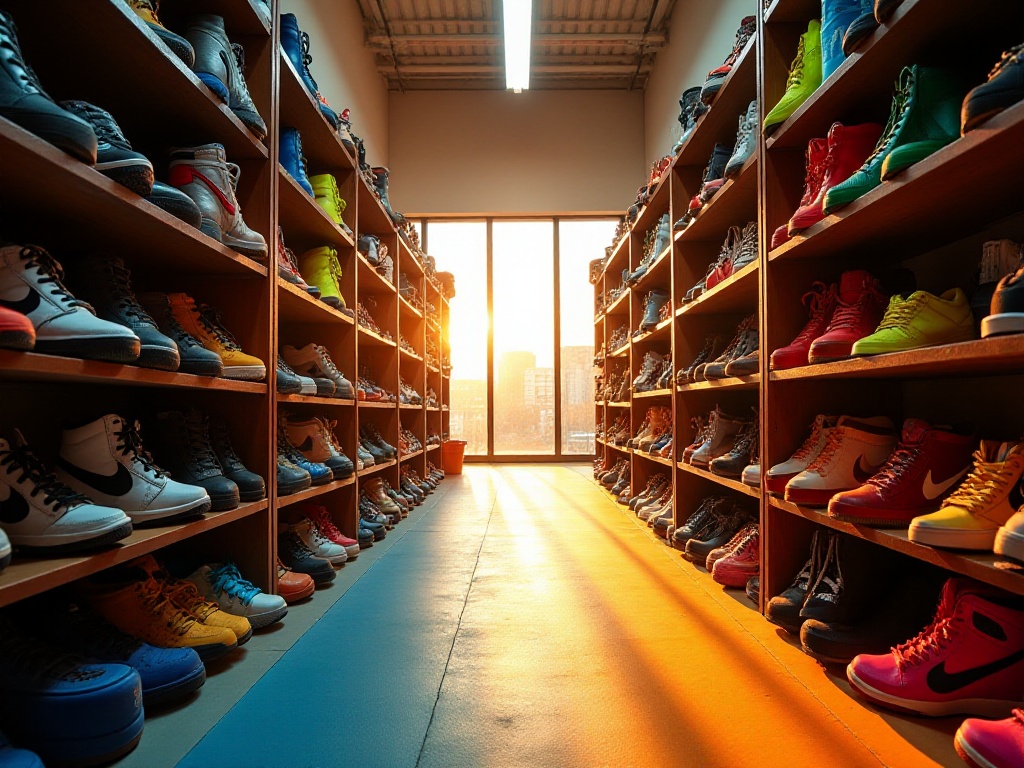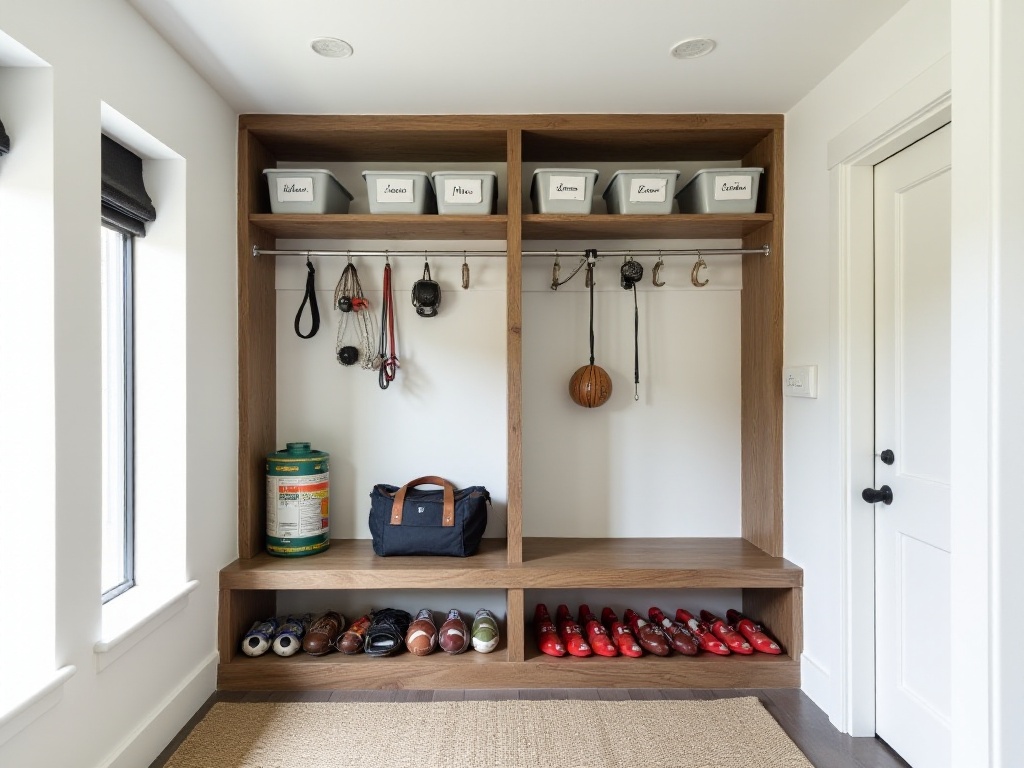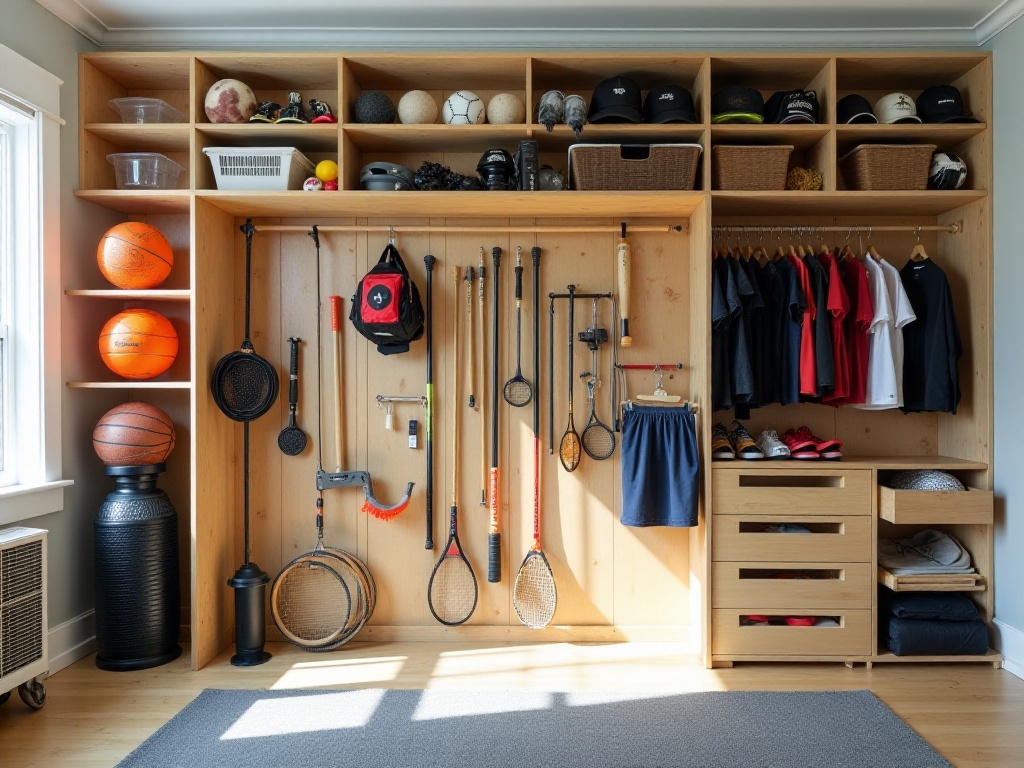Introduction
As a fitness and sports enthusiast who frequently works out and plays sports, I deeply understand the importance of organizing sports equipment. When I first started working out, my room was literally a "sports equipment dump." Sneakers were everywhere, yoga mats were haphazardly rolled and stuffed in corners, and protective gear and towels were mixed together emitting post-workout odors. Every time I wanted to exercise, it would take ten or more minutes to find equipment, by which time I'd often lost my motivation to work out.
After years of exploration and improvement, I finally found a storage solution that works for me. Now my sports equipment is not only well-organized but also easily accessible and well-maintained. Today I'll share my personal experience, hoping to help you say goodbye to chaos and create an organized sports space.
Space Planning
Before starting organization, we first need to establish proper space planning awareness. My space planning philosophy is: put the most frequently used equipment in the most accessible places, while less frequently used items can be stored in relatively less accessible positions.
For example, I put my running shoes, which I use daily, in the most visible spot in the entryway shoe cabinet. This way, even when I'm groggy in the morning, I can spot them immediately. Since I use my yoga mat three to four times a week, I keep it standing next to the umbrella stand in the entryway, rolled up in a dedicated yoga mat bag. This maintains a neat appearance while keeping it easily accessible.
For seasonal sports equipment, like ski wear and skis that are only used in winter, I store them in the storage room. However, it's important to note that even in the storage room, clear zones should be defined. I keep all winter sports equipment in one area, stored in categorized storage boxes with clear labels on the outside. This way, when winter comes, I can quickly find the equipment I need without rummaging through everything.
I remember last winter when I planned to go skiing with friends. While others were frantically searching for their equipment before departure, I had all my gear ready in just five minutes. My friends were amazed at my efficiency, but it's really just the convenience that comes from good space planning.

Zone Organization
Car Storage
As someone who frequently drives to the gym and sports venues, I know the importance of car storage. A well-organized trunk not only keeps your sports equipment in order but also prevents equipment from rolling around while driving.
I keep a large collapsible storage box in my trunk, about 60 liters in capacity, with compartments dividing the space into several zones. The largest zone is for sportswear, where I keep a spare set of workout clothes, towels, and sports underwear. Another zone is for supplies, containing energy bars, sports drinks, and supplements. There's also a small zone specifically for emergency items like bandages, athletic tape, and basic first aid supplies.
On one side of the trunk, I've fixed a mesh pocket with Velcro, specifically for items that tend to roll around, like tennis balls and shuttlecocks. This prevents them from rolling around during driving. On the other side of the trunk, I've installed a retractable hook for hanging sports bags or wet workout clothes.
I remember once when we went to play tennis and encountered a sudden downpour. My tennis racket and balls were safely stored in the waterproof storage box, while everyone else's equipment got wet. Since then, my car storage method has become famous among my friends.
Home Storage
When it comes to home storage, I use a "three-zone" storage method, which not only keeps my sports equipment organized but also greatly improves my workout efficiency.
Setting up the daily zone is crucial as it directly affects your daily workout experience. I've installed a multi-functional storage rack at the entrance with hooks, shelves, and drawers. The hooks are for hanging sports jackets, hats, and backpacks, shelves for frequently used sports shoes, and drawers for small items like wristbands and headbands.
This storage rack is thoughtfully designed with a shoe rack at the bottom that can hold 3-4 pairs of frequently worn sports shoes. The shoe rack has a mesh design for ventilation. I also placed dehumidifying boxes under the shoe rack to effectively prevent odors.
In a corner of the living room, I've dedicated a "sports zone." Here, there's a full-length mirror with a small open storage shelf beside it. The shelf holds frequently used equipment like yoga mats, foam rollers, and yoga blocks. This arrangement is not only aesthetically pleasing but also very practical. After morning workouts or night runs, I always put used equipment back in its place, maintaining the zone's tidiness.
Seasonal storage also requires careful consideration. I bought several large vacuum storage bags specifically for seasonal sports equipment. For example, in summer, I clean and dry winter sports equipment like ski wear and snow boots before storing them compressed in vacuum bags. This not only saves space but also prevents clothing from getting moldy.
I keep these vacuum bags on the upper shelves of the closet or in the storage room, with detailed labels on each bag noting the contents and the date of last use and cleaning. This small habit has helped me tremendously – I never find moldy equipment anymore when I take it out.
As for long-term storage, I utilize the storage room space. The storage room has a full wall of shelving that I've divided into several zones. The most accessible positions are for equipment that might be needed suddenly, like camping gear and hiking equipment. Items with more sentimental than practical value, like trophies or cherished autographed jerseys, are stored in higher or deeper positions.
Odor Control and Maintenance
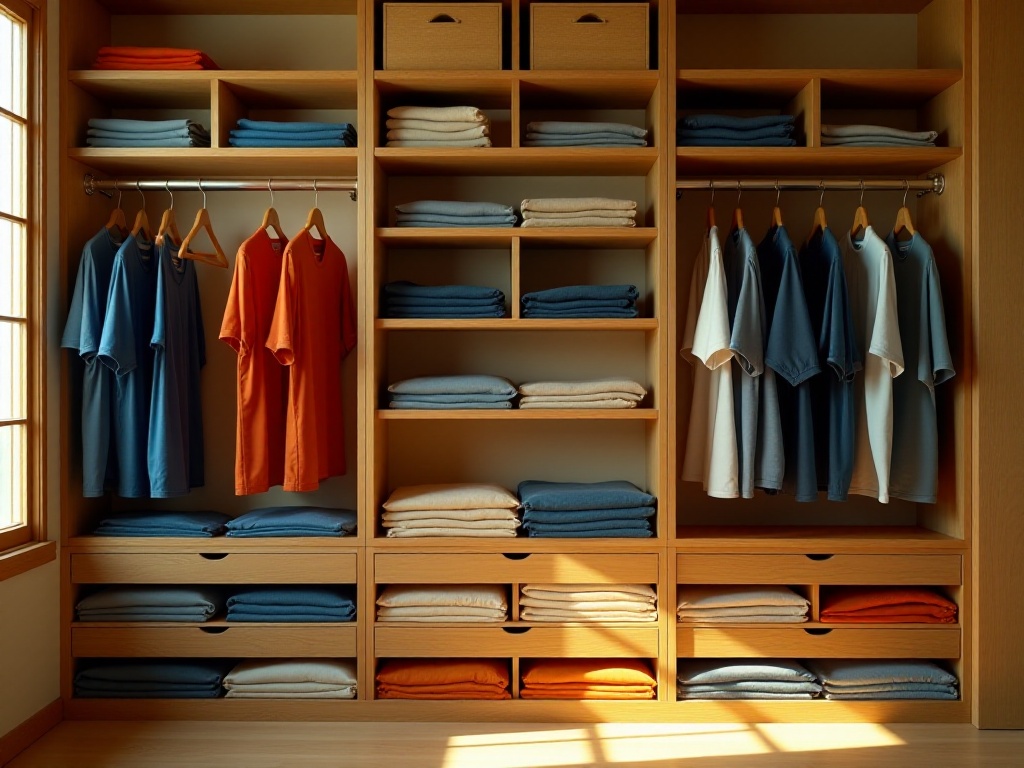
Odor Removal Tips
Odor problems with sports equipment are a concern every sports enthusiast faces. After countless trials and errors, I've summarized several particularly effective deodorizing methods.
The freezer method is one of my most frequently used techniques. When I first heard about this method, I thought it was strange, but practice has proven it works well. The specific approach is: place odorous protective gear, like boxing gloves or knee pads, in a sealed bag and put them in the freezer for 24 hours. This method works because low temperatures inhibit the growth of odor-causing bacteria. I now do this freezer treatment weekly for my combat sports gear, and it works quite well.
However, when using the freezer method, it's essential to completely dry the gear first, otherwise, the moisture will freeze and potentially damage the equipment. Also, it's best to wipe the surface of the gear with a clean towel before placing it in the sealed bag to improve the deodorizing effect.
Sunlight deodorizing is the most natural and environmentally friendly method. I choose sunny days to air out sports equipment on the balcony. However, different equipment needs different sunning times. For fabrics like sportswear and towels, 2-3 hours is sufficient to avoid fading. Sports shoes and protective gear can be sunned longer, usually 4-5 hours.
When airing equipment, I spread everything out to let sunlight reach every corner. For example, I remove shoe insoles to sun them separately. For protective gear like knee and elbow pads, I unfold every crease. This ensures the best deodorizing effect.
Baking soda deodorizing is my essential weapon against odors, especially effective for sports shoes. After evening workouts, I sprinkle some baking soda in the shoes and pour it out the next morning, which significantly reduces odors. This method is simple and practical, and baking soda is inexpensive, making it highly cost-effective.
I've discovered an upgraded way to use baking soda. You can put the powder in a breathable fabric bag and place it in the compartment of your sports bag. This continuously absorbs odors without spreading powder everywhere.
Besides these methods, I also place activated charcoal packets and sachets in storage cabinets. Activated charcoal continuously absorbs odors, while sachets emit a subtle fragrance. When choosing sachets, opt for natural plant fragrances over artificial ones, as some people are sensitive to artificial fragrances.
Cleaning Techniques
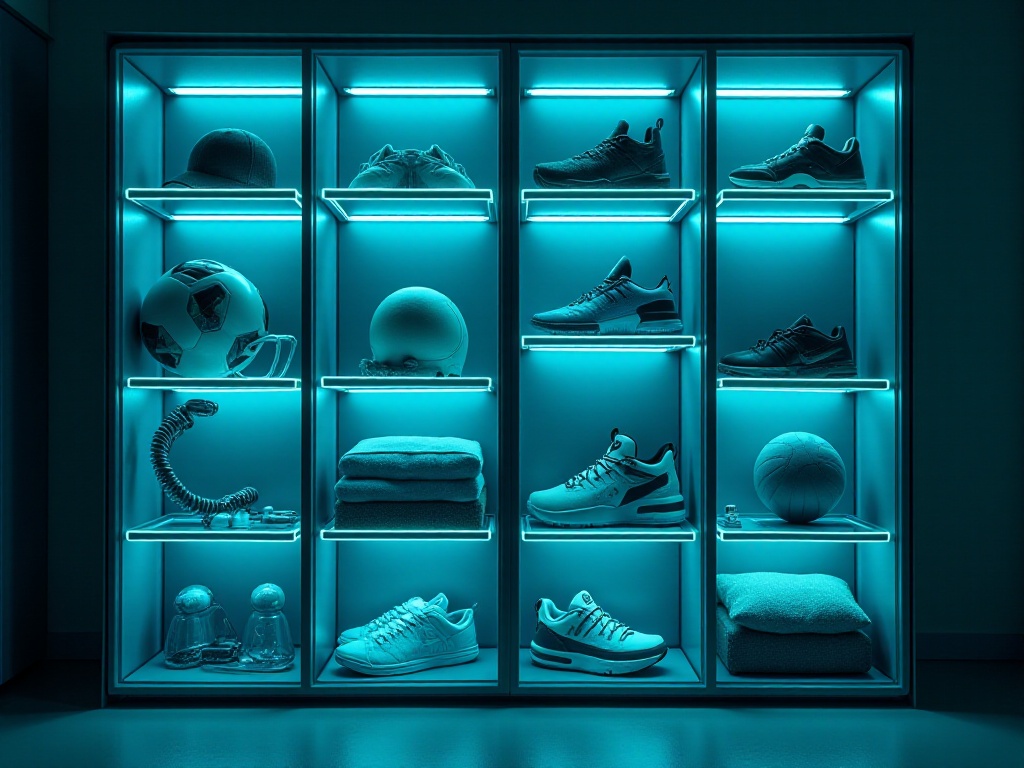
Daily Maintenance
When it comes to cleaning sports equipment, my principle is: "Frequent care, less accumulation." After each workout, I spend 10-15 minutes doing basic cleaning.
For sportswear, I first wipe off surface sweat with a dry towel, then hang it in a ventilated place to dry. If I can't wash it immediately that day, I at least ensure the clothing is completely dry before storing it. I've now developed a good habit of washing workout clothes the same day they're worn, which not only removes odors promptly but also extends the life of the clothing.
Sports shoe maintenance is also important. After each workout, I gently brush off dust and dirt from the shoe surface with a soft brush. If shoes are particularly dirty, I wipe them with a damp cloth, being careful not to get them too wet. It's best to remove insoles after each use to dry, which effectively prevents shoe odor.
For equipment that can't be washed with water, like leather boxing gloves or protective gear, I use professional cleaning sprays. The method is to spray some on a clean towel and gently wipe the equipment surface. These cleaning sprays not only clean surface dirt but also condition the leather to prevent cracking.
I previously ruined an expensive pair of genuine leather boxing gloves in less than six months due to improper maintenance. Later I learned that leather equipment needs regular conditioning oil to maintain flexibility. Now I do a deep conditioning of leather equipment monthly, first cleaning, then applying professional leather conditioning oil. As a result, my current boxing gloves are still in perfect condition after more than two years.
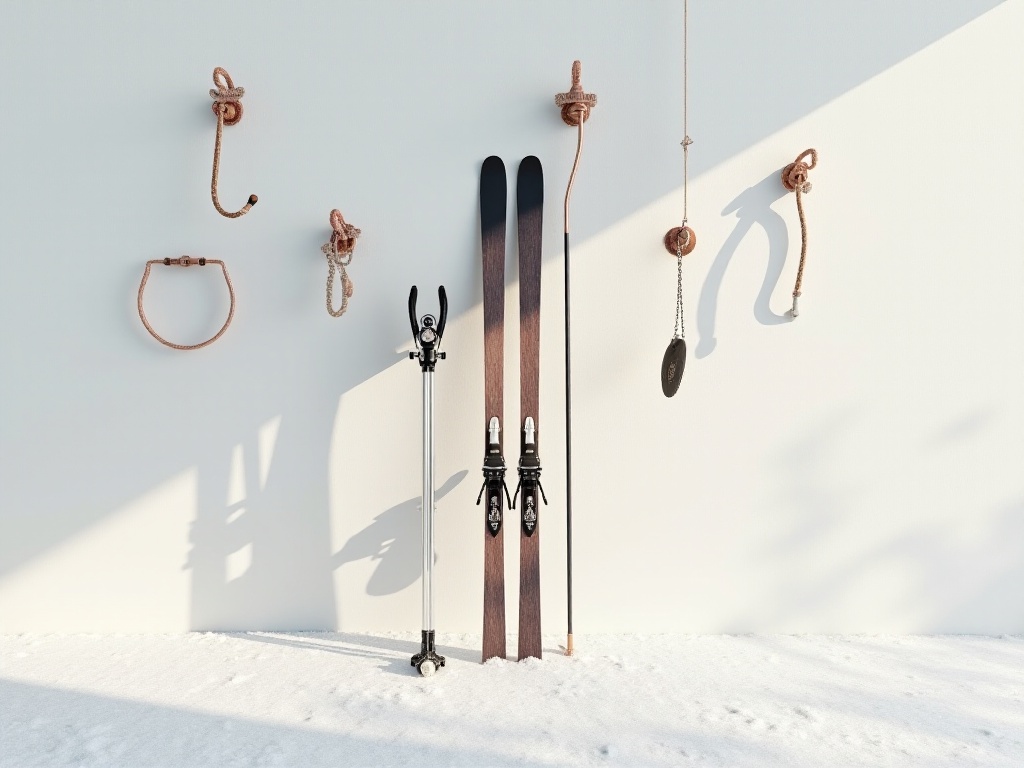
Regular Maintenance
Besides basic daily care, I do a thorough cleaning of all sports equipment every quarter. While this process is time-consuming, it's really necessary.
First is a comprehensive inspection of all equipment's condition. Check if sportswear has loose threads or holes, if shoe soles are worn, if protective gear's Velcro is still secure, etc. Problems should be addressed promptly, with minor issues repaired to prevent further deterioration.
For sportswear, I take out all garments for inspection, washing what needs washing and repairing what needs repair. The most common problems with sportswear are color fading and pilling. For fading, I use specialized sports detergent during washing, which effectively protects the garment's color. Pilling can be handled with a fabric shaver, but be careful with pressure to avoid damaging the fabric.
Quarterly maintenance for sports shoes needs to be more thorough. Besides basic cleaning, I check the condition of laces and insoles. Generally, running shoe insoles should be replaced after 3-4 months of use. Shoelaces showing wear should be replaced promptly to avoid breaking during exercise. For special materials like leather soccer shoes, I use specialized leather conditioning oil for maintenance.
Protective gear maintenance is also crucial. I check all gear's binding and stitching for integrity and whether Velcro still has sufficient adhesion. If Velcro is losing its grip, you can clean the surface with a fine brush to remove lint and dust, which can somewhat restore adhesiveness. For damaged protective gear, decide whether to repair or replace based on the extent of damage. After all, protective gear relates to sports safety and can't be taken lightly.
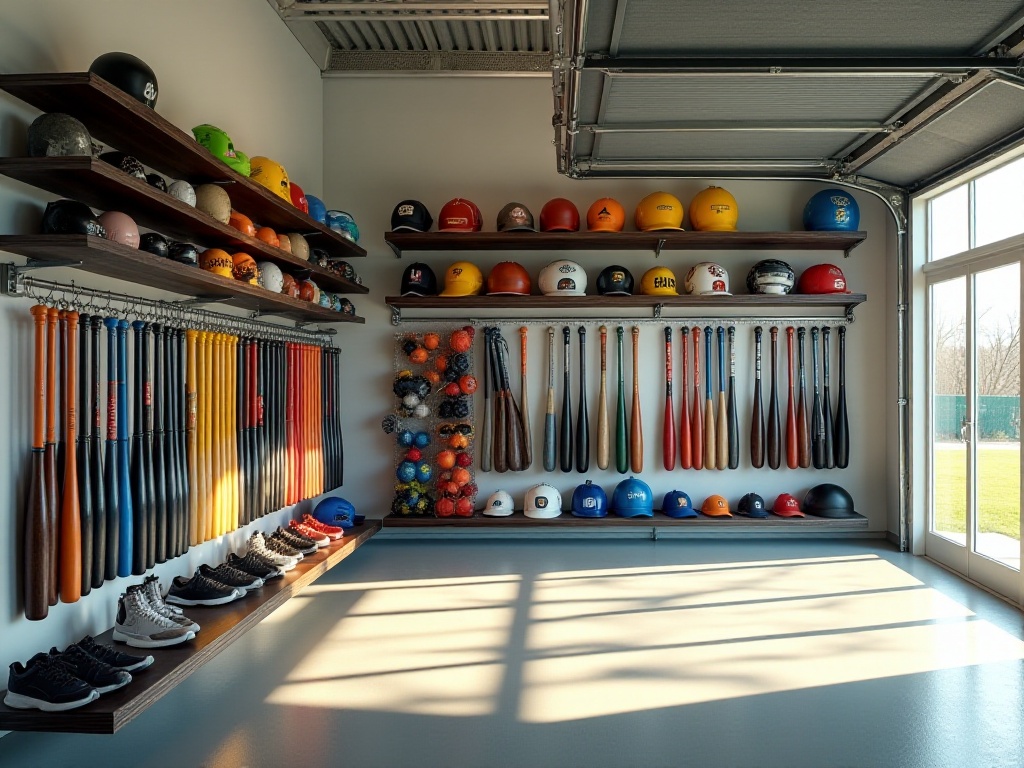
Storage Tips
After years of exploration, I've increasingly realized that good storage solutions aren't just about keeping things neat and tidy; more importantly, they should match usage habits, allowing easy access during workouts and immediate storage afterward.
My current storage solutions follow several basic principles:
First is the convenience principle. Most frequently used equipment should be in the most accessible locations. For example, my daily running gear is kept in a dedicated spot by the entrance, ready to grab when I want to run. Less frequently used equipment can be stored in relatively less accessible locations.
Second is the classification principle. Equipment for the same sport should be kept together. For example, I keep all yoga items, including mats, blocks, and straps, in the same area. This way, you don't have to search everywhere when exercising – you can get all needed equipment at once.
Third is the labeling principle. For less frequently used equipment, I attach clear labels to storage boxes indicating the category of contents. Sometimes I even take photos of the items inside and attach the list to the box exterior, making it immediately clear what's inside.
Fourth is the regular organization principle. I take time monthly to check all sports equipment, categorizing and handling items that are infrequently used or no longer needed. Some can be given to friends who need them, others can be sold second-hand, maintaining storage space tidiness while avoiding accumulating too much unused equipment.
Finally, I want to say that developing good storage habits takes time to cultivate and maintain. It might seem troublesome at first, but if you persist, you'll find these small habits can make your sports life much easier and more enjoyable. When you want to exercise and all your needed equipment is clean and organized waiting for you, it's really a great feeling.
Storage organization is a process that needs continuous improvement, and different people may have different storage methods. I hope sharing my experiences can give you some inspiration to help you find the storage solution that works best for you. Let's create an organized sports space together, making exercise an easy and enjoyable part of life.


